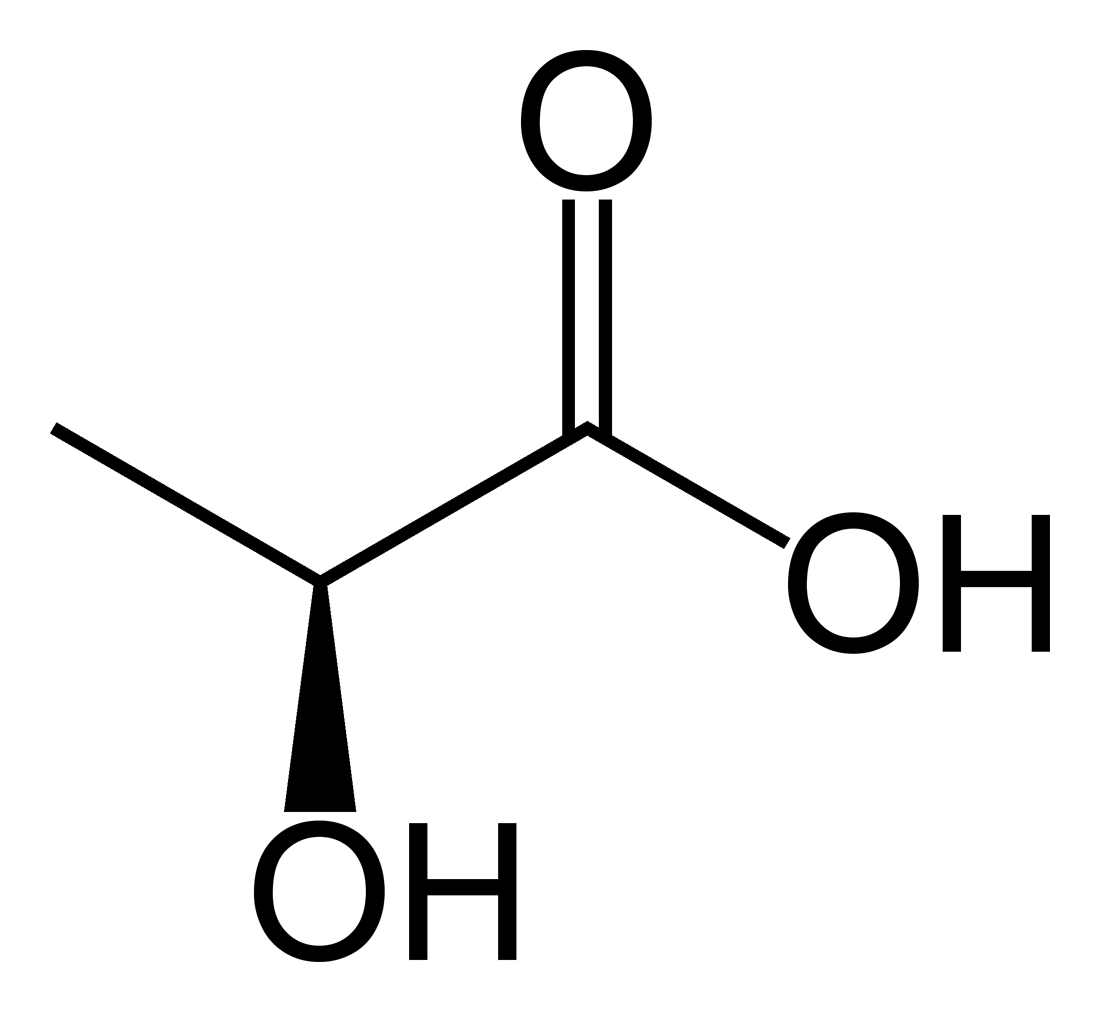|
|
| Line 13: |
Line 13: |
|
| |
|
| ==[[Lactic acidosis overview|Overview]]== | | ==[[Lactic acidosis overview|Overview]]== |
| Lactic acid is a [[carbohydrate]] and its levels rise with increased metabolism during exercise and with [[catecholamine]] stimulation. The excess of lactic acid in the body causes muscle pain, and occurs when oxygen levels in the body drop (hypoxia). Defined as serum lactate levels above 4mmol/L and a blood pH ≤7.35, the occurrence of Lactic acidosis LA) in type 2 diabetes specifically is of great concern because the mortality rate can be as high as 50%
| | <br /> |
| | |
| ==[[Lactic acidosis historical perspective|Historical Perspective]]== | | ==[[Lactic acidosis historical perspective|Historical Perspective]]== |
| Lactic acid was first found and described in sour milk by Karl Wilhelm Scheele (1742–1786) in 1780. The German physician–chemist Johann Joseph Scherer (1841–1869) was the first to demonstrate the presence of lactic acid in human blood in 1843 and 1851. His 1843 case reports are the first description of lactic acid in human blood post-mortem and as a pathological finding in septic and haemorrhagic shock. Carl Folwarczny, an Austrian physician, was the first to demonstrate lactic acid in blood in a living patient in 1858.<br />
| | <br /> |
| ==[[Lactic acidosis classification|Classification]]== | | ==[[Lactic acidosis classification|Classification]]== |
| Lactic acidosis is classified into [[Lactic acidosis classification|Type A]] (hypoxemic) and [[Lactic acidosis classification|type B]] (due to underlying conditions or drugs). <br />
| | <br /> |
| ==[[Lactic acidosis pathophysiology|Pathophysiology]]== | | ==[[Lactic acidosis pathophysiology|Pathophysiology]]== |
| A general idea about the development of lactic acidosis is that any mechanisms that increase production of, or decrease clearance of lactate lead to lactic acidosis. Lactic acidosis occurs when cells make lactic acid faster than it can be metabolized. Normal lactate levels are less than 2 mmol/L, lactate levels between 2 mmol/L and 4 mmol/L are defined as hyperlactatemia. Severe hyperlactatemia is a level of 4 mmol/L or higher. Other definitions for lactic acidosis include: pH less than or equal to 7.35 and lactatemia greater than 2 mmol/L with a partial pressure of carbon dioxide (PaC02) less than or equal to 42 mmHg.<br />
| | <br /> |
| ==[[Lactic acidosis causes|Causes]]== | | ==[[Lactic acidosis causes|Causes]]== |
| Listed are most common causes of lactic acidosis, greater detail available [[Lactic acidosis causes|here]].
| |
|
| |
| *Alcoholism
| |
| *[[Carbon monoxide poisoning resident survival guide|Carbon monoxide poisoning]]
| |
| *[[Cyanide]] poisoning
| |
| *Exercise
| |
| *[[Grand mal seizure]]
| |
| *Hypoglycemia
| |
| *Hypoxemia
| |
| *Malignancy
| |
| *[[Metformin]]
| |
|
| |
| <br /> | | <br /> |
| ==[[Lactic acidosis differential diagnosis|Differentiating Lactic acidosis from other Diseases]]== | | ==[[Lactic acidosis differential diagnosis|Differentiating Lactic acidosis from other Diseases]]== |
| Lactic acidosis must be differentiated from other diseases that cause elevated lactate Any shock state or dysfunction of the metabolic pathway responsible for lactate clearance or production can underlie lactic acidosis. A few are:
| |
|
| |
| * Inborn errors of metabolism
| |
| * Cardiogenic shock
| |
| * Cardiogenic pulmonary edema
| |
|
| |
| <br /> | | <br /> |
|
| |
|
| ==[[Lactic acidosis epidemiology and demographics|Epidemiology and Demographics]]== | | ==[[Lactic acidosis epidemiology and demographics|Epidemiology and Demographics]]== |
| Lactic acidosis is a rare event, with an estimated incidence of 4.3 cases per 100,000 person-years in metformin users. The occurrence in type 2 diabetes is alarming as the mortality can be up to 50%. A secondary analysis of more than 41,000 person-years in type 2 diabetes showed that the incidence of LA in diabetic patients not exposed to metformin was between 9.7 and 16.7 per 100,000 person-years. Lactic acidosis often occurs in patients with acute severe asthma, most likely due to fatiguing respiratory muscles and subsequent inadequate oxygen delivery to the muscles and liver ischemia. Severe lactic acidosis also occurs in sedated mechanically ventilated patients without respiratory muscle activity.<br />
| | <br /> |
| ==[[Lactic acidosis risk factors|Risk Factors]]== | | ==[[Lactic acidosis risk factors|Risk Factors]]== |
| Risk factors include but are not limited to:
| |
|
| |
| *Underlying sepsis
| |
| *Shock state
| |
|
| |
| <br /> | | <br /> |
| ==[[Lactic acidosis natural history, complications and prognosis|Natural History, Complications and Prognosis]]== | | ==[[Lactic acidosis natural history, complications and prognosis|Natural History, Complications and Prognosis]]== |
| Lactic acidosis may occur rapidly within minutes or gradually, over a period of days, depending on the underlying cause. Treating the cause of the metabolic disturbance relieves symptoms which are nonspecific, and may include disorientation, muscle pains, nausea, jaundice, shallow breathing or rapid heart rate. Common complications of lactic acidosis include [https://www.wikidoc.org/index.php/Cardiac%20arrhythmia arrythmias], loss of consciousness, organ failure and death. Benign causes, such as temporary elevations of lactate after exercise, are harmless, however, if it occurs as part of an underlying systemic disease, it can lead to significantly worse outcomes. <br />
| | <br /> |
| ==Diagnosis== | | ==Diagnosis== |
|
| |
|
